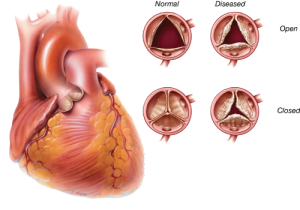Introduction
Heart Common Conditions is a broad term encompassing various conditions that impact the heart’s functionality. This comprehensive guide aims to shed light on the types of heart diseases, their distinctive symptoms, and proactive steps for prevention.
Types of Heart Diseases
Coronary Artery Disease (CAD)
Coronary artery disease is one of the most prevalent heart conditions, affecting the major blood vessels that supply the heart muscle. It occurs due to cholesterol deposits, or plaques, in the heart arteries, leading to a condition known as atherosclerosis. This buildup diminishes blood flow, potentially resulting in severe consequences such as heart attacks, chest pain (angina), or strokes.
Symptoms:
- Chest pain, tightness, pressure (angina)
- Shortness of breath
- Pain in the neck, jaw, throat, upper belly area, or back
- Numbness, weakness, or coldness in the legs or arms if blood vessels are narrowed
Causes:
Coronary artery disease is primarily caused by the accumulation of cholesterol deposits leading to atherosclerosis. Interestingly, symptoms may vary between men and women, with men more likely to experience chest pain, while women might exhibit additional symptoms like shortness of breath, nausea, and extreme fatigue.
Prevention:
- Embrace lifestyle changes
- Regular health checkups for early detection
Irregular Heartbeats (Arrhythmias)
Irregular heartbeats, or arrhythmias, refer to situations where the heart beats too quickly, too slowly, or irregularly. Such conditions can manifest through various symptoms.
Symptoms:
- Chest discomfort
- Dizziness
- Fainting or near-fainting (syncope)
- Fluttering sensation in the chest
- Lightheadedness
- Racing heartbeat (tachycardia)
- Shortness of breath
- Slow heartbeat (bradycardia)
Causes:
Arrhythmias are often associated with abnormal heart rhythms, disrupting the heart’s natural pace.

Congenital Heart Defects
Congenital heart defects are structural abnormalities present at birth. Some defects may become apparent soon after birth, while others may manifest later in childhood or adulthood.
Symptoms (in children):
- Cyanosis (pale gray or blue skin or lips)
- Swelling in the legs, belly area, or around the eyes
- Shortness of breath during feedings in infants, leading to poor weight gain
Causes:
The root cause of congenital heart defects lies in the abnormal development of the heart structure during fetal growth.
Cardiomyopathy
Cardiomyopathy involves the deterioration of the heart muscle, and its early stages may not produce noticeable symptoms. As the condition progresses, various symptoms may emerge.
Symptoms:
- Dizziness, lightheadedness, and fainting
- Fatigue
- Shortness of breath during activity or at rest
- Breathlessness at night or upon waking up
- Irregular heartbeats (rapid, pounding, or fluttering)
- Swollen legs, ankles, or feet
Causes:
Cardiomyopathy is characterized by a weakened heart muscle, impacting its ability to pump blood effectively.
Valvular Heart Disease
The heart contains four valves— aortic, mitral, pulmonary, and tricuspid— that facilitate the flow of blood through the heart. Any damage to these valves can result in valvular heart disease.
Symptoms:
- Chest pain
- Fainting (syncope)
- Fatigue
- Irregular heartbeat
- Shortness of breath
- Swollen feet or ankles
Causes:
Valvular heart disease encompasses conditions where heart valves become narrowed (stenosis), leaky (regurgitation or insufficiency), or close improperly (prolapse). Treatment for other health problems

When to Seek Medical Help
Recognizing the urgency of certain symptoms is crucial for seeking prompt medical assistance.
Emergency Symptoms:
- Chest pain
- Shortness of breath
- Fainting
Immediate Action:
- Dial 911 for suspected heart attack
Importance of Early Detection:
- Regular health checkups aid in early identification
- Consultation for concerns or family history
Conclusion
In conclusion, understanding the nuances of heart diseases is paramount for early detection and prevention. Recognizing symptoms, adopting heart-healthy lifestyles, and seeking timely medical advice can significantly mitigate the risk of heart-related issues. If you suspect any symptoms related to heart diseases, do not hesitate to consult your healthcare provider for personalized guidance and proactive measures to ensure a healthier heart.




